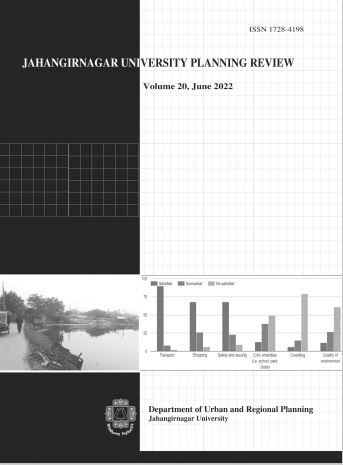Formal Rental Housing Condition in Dhaka: Case Study in Mirpur
Main Article Content
Abstract
Most of the people in Dhaka are tenants. House rent is increasing exorbitant in Dhaka.
The research aims to explore the rental housing conditions of the middle-income bracket
in Dhaka in terms of affordability, adequacy, and tenant security. The research collects
primary data through a questionnaire survey from sample households in the case area
Mirpur, a middle-income residential area. The research found that 20 percent of tenants
live in non-affordable rental houses. Per sq. ft. rent price is higher in smaller rental houses.
The average share of rental housing cost compared to household income is 22.6 which is
comparatively higher for lower-middle income households. Smaller households have
larger per capita house space, as they pay more per sq. ft. rental price and per person
rental price. House size, floor space per person, housing expense per person, and persons
per room depend on household income, not household size. Overcrowding is a problem
for lower-middle-income tenants and smaller housing dwellers. Most of the respondents
are not satisfied with the availability of civic amenities, quality of the environment, and
overcrowding of the locality. Hassles of house change and the behavior of the owners of
houses are the main social problem for tenants. Most of the time (98%), there is no written
agreement of the rental, thus house owner can increase the house rent arbitrarily. It is
needed to implement the tenancy act to safeguard the interests of both tenants and
landowners in Dhaka.

